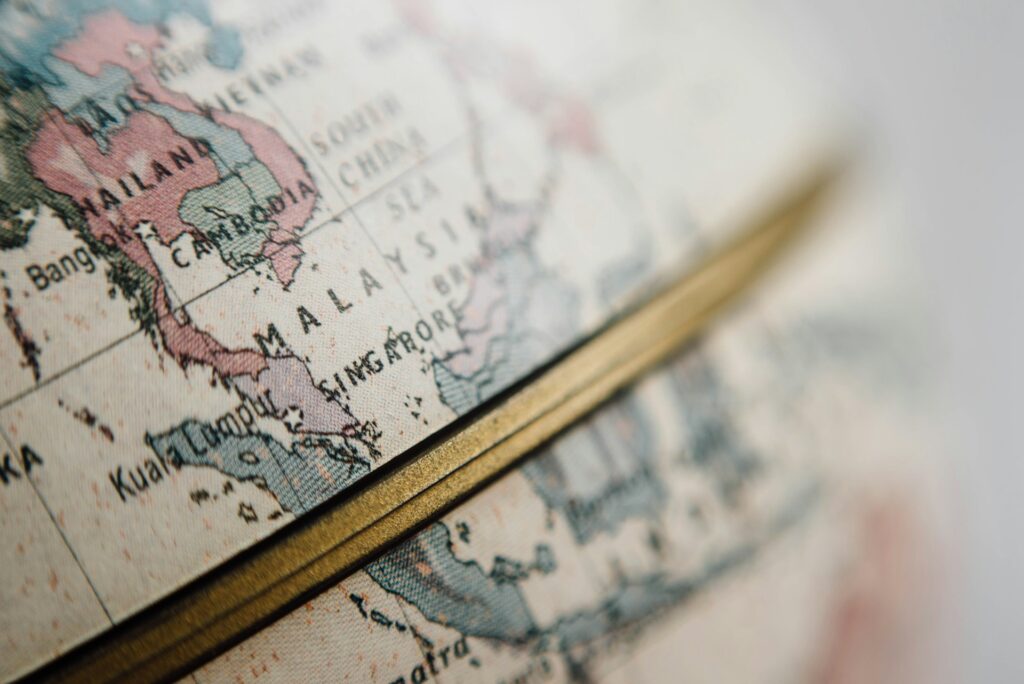There are five different options – although not necessarily solutions – that the Nordic states can offer for Scotland post-Brexit and pre-IndyRef2. Some of the options could and should inform a critical debate but that is to ignore the harsh exigencies of party politics.
In Finland’s centenary year it is ironic that Brexit has done little to stimulate a critical debate about independent Finland’s position in a changing European Union. Paavo Lipponen has eschewed a variable geometry, two-track EU, reiterating his long-held view that Finland should hang on to Germany and the coat-tails of other core EU members.
Jussi Halla-aho wants Finland out of the Eurozone and indeed the EU as a whole, whilst Eurosceptic and arch-maverick Paavo Väyrynen has dusted down his blueprint for a ‘Nordic Community’ (Pohjolan yhteisö), which he urged as an alternative to EU membership in the early 1990s.
However, a measured critique of Finland’s EU membership has been largely conspicuous by its absence – aside perhaps from a recent response to Lipponen from Vesa Vihriälä.
But if Finland is, as usual quietist, what of Scotland’s future in or out of the EU, as an independent state or part of a non-EU UK? Do the Nordic states perhaps offer Scotland a ‘solution’ post-Brexit?
“Scotland’s future must be Scotland’s choice”
Let’s go back a little. On September 18, 2014 voters were asked ‘Should Scotland be an independent country?’ Emotions ran high, Saltires were waved, families were divided, membership of the Scottish National Party soared and veteran readers of Politiikasta may recall I voted ‘no’ along with 55.3 per cent of voters (EU citizens in Scotland were permitted to vote).
Independence divided the Scottish parties.
Independence divided the Scottish parties. However, in the run-up to the Brexit referendum in June 2016, the leaders of all five leading Scottish parties – and they are Scottish parties – the Scottish National Party (SNP), the Scottish Conservative and Unionist Party, Scottish Labour, the Scottish Liberal Democrats and Scottish Greens issued a joint proclamation urging voters to Remain in the EU.
True to form, Scotland proceeded ‘to do its own thing’. Whereas in the UK as a whole 51.9 per cent opted to ‘Leave’, Scotland voted by 62–38 per cent to Remain in the EU.
The Scottish First Minister (they don’t use the term prime minister ‘north of the border’), Nicola Sturgeon, saw her opportunity . The day after the Brexit referendum the headline in my local newspaper The Press and Journal on June 25 ran: “Get Ready for Indy Ref 2”. It was reporting a comment by Sturgeon, only hours after David Cameron’s resignation as British prime minister, that it was “highly likely” another vote on independence would happen in the next two years.
The new PM Theresa May was not amused and referred dismissively to Sturgeon’s “tunnel vision”. At the Conservative party conference on October 2 last year she stated unambiguously enough: “I will never allow divisive nationalists to undermine the precious Union between the four nations of our United Kingdom.” The battle lines were drawn: a progressive Scotland versus a reactionary UK and in Sturgeon’s eyes there would be only one winner.
Scottish nationalism
At this point I need to say a word about Scottish nationalism and the vision for a future Scotland. Neil MacCormick, the son of one of the SNP’s founders, has distinguished between two types of nationalism.
Existential nationalism is independence for its own sake – driven, dare as I say it, by historic victories over the English at Bannockburn (1314), a detestation of English Tories (Conservatives) – and the late Margaret Thatcher in particular – and stung by the Scottish humiliation at the hands of the English rugby team (61–21 points) in the recent Calcutta Cup match.
Utilitarian nationalism in contrast is “sovereignty on the basis of social, economic and cultural change”, at the heart of which is a thriving and sustainable economy.
Sturgeon has expressly professed the utilitarian variety. “The fact of nationhood or Scottish identity is not a motive for independence. Independence is not essential to preserve our distinctive Scottish identity. Independence matters because without it Scotland lacks the powers to reach our potential.”
“Independence matters because without it Scotland lacks the powers to reach our potential.”
This seems reasonable enough, particularly as the small independent Nordic states (Denmark, Finland and Norway – all members of the ‘five million club’) – appear to have reached their prosperous potential and have ‘happy citizens’ too! I refer here (tongue in cheek) to the recent World Happiness Report which placed Norway first and Finland fifth happiest place on the planet.
So do the Nordic states offer Scotland a ‘solution’ post-Brexit?
From Halla-aho option to Väyrynen-style
First, the Icelandic option (Halla-aho solution), that is ‘Independence without EU membership’. Recall here that Iceland is the only Nordic state never to have voted on EU membership.
Iceland also has very low levels of immigration and the parliament must pass a separate law for each and every foreigner to become an Icelandic citizen. In fairness immigration was a much less salient an issue in Scotland than in the ‘deep south’. The number of immigrants is significantly lower than in regions of the south – particularly London and the south-east – and the Scottish line has in any event been a liberal one, taking in more than one-third of the UK’s Syrian refugees.
In any event, the Icelandic option has an appeal. Jim Sillars, the former SNP deputy-leader, is a case in point. “I could not vote ‘Yes’ if on the [IndyRef2] ballot paper it said we wish the Scottish state to be a member of the European Union”. Indeed, one-third of those who voted ‘Yes’ to Scottish Independence in 2014 also voted to leave the EU – many of them SNP core supporters.
Next, the Swedish option – “an independent Scotland will continue to use the pound and seek full membership of the EU” (Sturgeon). Sweden is of course a full EU member but rejected the euro in a referendum in 2003. The Swedish krona-based economy is presently flourishing.
However, as Lord King, former governor of the Bank of England has noted, for Scotland public finances might well pose a problem: “a consequence of deciding to be financially independent is that you end up paying for it yourself”. He added that it would be a challenge to borrow on the international market if Scotland decided to run a large budget deficit.
Third, the Norwegian option –that is the ETA formula or ‘access to the single market but not full EU membership’. This stresses the importance of the European market for Scottish exports (not least whisky exports) and elements in the SNP have long flirted with this solution.
Unlike Norway, however, which decades ago placed oil revenues into a ‘rainy day fund’, the cry “it is Scotland’s oil” fell on deaf ears down south whilst oil prices have slumped at just the wrong moment. Indeed, this year house sales in Aberdeen and Aberdeenshire have picked up for the first time in three years. Yet oil workers are being retrained as teachers and many have simply ‘left town’.
In any event, the Norwegian option could be sold as offering the benefits of access to the single market but Scotland would not be able directly to influence EU decisions. Rather, it would be obliged to implement directives and regulations from Brussels. The Norwegian solution would exact a high political price for independence.
Fourth, the Finnish (Lipponen) option – that is, full membership of the EU and Eurozone. The only zealously Europhile party in Scotland and the UK is the Liberal Democrats. They are now the smallest party in the Scottish Parliament with 5 seats although their membership has been swelled by ‘Remainers’ seeking a spiritual home. Lipponen would find few ‘fellow travellers’ outside of unapologetic federalists.
Finally, the Nordic Community (Väyrynen) option – that is, a common market outside the EU and with a quasi-independent Scotland exercising increased political powers – that is, de facto sovereignty.
The Scottish Labour leader, Kezia Dugdale, has canvassed this type of neo-federalist solution whilst the former British prime minister Gordon Brown (himself a Scot) has warned that leaving the UK means leaving the UK single market. He has advocated increased powers to the Scottish Parliament, inter alia to set VAT rates, sign international treaties, regulate the environment, employment and energy.
At the Scottish National Party conference in Aberdeen at the week-end Sturgeon told the ‘faithful’: “Scotland’s future must be Scotland’s choice”, pointing to the SNP manifesto for the 2016 Scottish Parliament election that an IndyRef2 would be in order if there was a “significant and material change in Scotland’s circumstances” – such as the country’s removal from the EU against its wishes.
Options are not necessarily solutions.
I have set out five Nordic options from which Scotland could choose although, as you will have guessed, options are not necessarily solutions. The SNP is divided between the Icelandic and Norwegian options; Sturgeon is close to the Swedish way, the Lib Dems would go the whole Finnish hog whilst a Väyrynen-style ‘rather the devil you know’ line is represented by Scottish Labour, albeit with Scotland exercising something close to sovereign powers.
The devil they say is often in the detail and thus far post-Brexit has been couched in generalities. IndyRef2 will surely happen if not necessarily between autumn 2018 and spring 2019. Some of the Nordic options could and should inform a critical debate but that of course is to ignore the harsh exigencies of party politics. Still, one can only hope…
David Arter is a Research Director at School of Management, University of Tampere.




